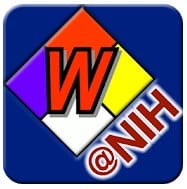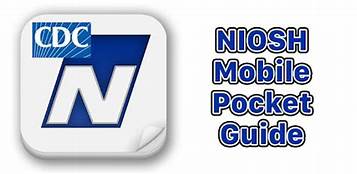Is The Fire Service Ready for Incident Command App Technology? Technology is growing like a wildfire, no pun intended, throughout all industries. The fire service is no different. We have seen unprecedented improvements and changes in all areas of the fire service industry.
From thermal imaging technology, to search drones the fire service is seeing technology change the way we do our jobs. The question I’m asking all of you; “Is The Fire Service Ready For Incident Command App Technology? We as firefighters often struggle with change, this is one I believe we need to embrace.
Let everyone know your thoughts on this important topic on our Firefighter Connection forum. Click here to be apart of the discussion!
I recently retired from the fire service as an Assistant Chief. During my 31 years in the fire service I saw a lot of changes in incident command. I also saw a lot of resistance to change and and acceptance to the use of technology and new equipment. As the saying goes” the fire service is 100 years of tradition unimpeded by progress.” The good news is we are seeing this as no longer true, however, it still can be a challenge to embrace change.
First, 4 Apps all Firefighters Should be Currently Using.
There is a lot of new and existing table and phone apps that have made the fire service safer and more effective. Here are just a few that I used on a regular bases.
1 – The Emergency Response Guidebook, ERG 2020
PHMSA (U.S. Department of Transportation Pipeline and Hazardous Materials Safety Administration)’s 2020 Emergency Response Guidebook provides first responders with a go-to resource to help deal with hazmat accidents during the critical first 30 minutes. The ERG App contains an indexed list of dangerous goods and the associated ID number, the general hazards they pose and recommended safety precautions.
The 2020 version of the ERG includes general revisions, reorganized general information pages, and the addition of protective distance mapping. Updated every four years, the ERG is available free to public safety agencies in all states and territories through designated state coordinators’ offices. PHMSA has partnered with the National Library of Medicine to provide this free application as well as a version of the ERG in its Wireless Information System for Emergency Responders (WISER) application.2.
2 – WISER – Wireless Information System for Emergency Responders.
This app is designed to assist first responders in hazmat incidents. First responders in general, and hazmat units in particular, must make many decisions quickly in handling hazmat incidents. They need accurate information about the hazardous substances, the emergency resources available, and the surrounding environmental conditions to save lives and minimize the impact on the environment and physical property. The WISER app extracts content from TOXNET’s Hazardous Substances Data Bank (HSDB), an authoritative, peer-reviewed information resource maintained by the National Library of Medicine, and places that information into the hands of those who need it most.
3- AskRail
The AskRail app is a hazardous materials safety tool for first responders who are first on scene or directly support the first on scene in the event of a rail incident. Access to certain features is restricted to authorized personnel.
4 – NIOSH Pocket Guide
The NIOSH Pocket Guide to Chemical Hazards is intended as a source of general industrial hygiene information for workers, employers, and occupational health professionals. The Pocket Guide presents key information and data in abbreviated tabular form for 677 chemicals or substance groupings (e.g., manganese compounds, tellurium compounds, inorganic tin compounds, etc.) that are found in the work environment. The industrial hygiene information found in the Pocket Guide should help users recognize and control occupational chemical hazards. The chemicals or substances contained in this revision include all substances for which the National Institute for Occupational Safety and Health (NIOSH) has recommended exposure limits (RELs) and those with permissible exposure limits (PELs) as found in the Occupational Safety and Health Administration (OSHA) General Industry Air Contaminants Standard (29 CFR 1910.1000).
In addition to this four apps i commonly used I also used several weather apps, Google maps and Google earth.
Needs for the Fire Service.
Incident command Management and Documentation.
Managing an incident is a fast passed and often stressful situation. Having tools and information readily available to help manage the incident is a must. Command officers rely on check lists, tactical work sheets, and preplans to help manage the incident. Training in the Incident Command Systems, ICS, is a must and experience can be your best friend. However, relying on a note pad to keep everything straight and documented is haphazard at best.
After a structure fire I would sit for hours writing the report for the incident. I would pour through pages of notes and review dispatch logs to do my best to accurately document the incident. With todays technology this is no longer the case for the incident commander. Using Zone Command, the app our department purchased, created an accurate PDF report and timeline of everything during the event. Through the app I can track everything in real time while keeping my command checklist readily available for reference. Another growing command app is Tablet Command. I have never used Tablet Command personally but it looks to have a lot of great tools as well.
These Command apps track all the units and crews on scene making Personnel Accountability Reports, PARs quick and accurate. They time stamp all events logged during the incident to include the completion of primary and secondary searches, changes in attack modes, extinguishment, and lost stop to name a few. The most important aspect of these tools is to help manage an emergency during the incident.
Nothing causes your blood to run cold quicker than a Mayday call. In this emergency as well as others such as a sudden collapse, quick change to defensive attack etc., you need to have accurate accountability of crews and their assignments. We like to think we have that through our weak accountability systems such as tags and Command boards, but unless you have a scribe from the start of the incident tracking this information we are probably fooling ourselves. Through training and in after action reviews I have found that most of the time it’s well in to the incident before the IC has even set up their accountability system. These apps are the tool that can make the difference in these stressful events.
With a few taps on my iPad, using Zone Command Pro I can quickly implement a PAR report to help identify where everyone is working and address the emergency needs.
Other important “bonuses” are the ability to recall the incident information later for after action reviews and training as well as accurate documentation for reports.
The future of Incident Command and Fire Ground Management.
As the Fire Service grows in complexity we need to embrace technology that will help use to better manage the incident while reducing the workload needed to track and coordinate everything. App technology is a great tool to do that.
There is a learning cure, as with ant new advancement in the industry. As firefighters we have always embraced fire ground training. As Fire Command officers we need to do the same by training on new technology to help us do our jobs well and keep our crews safe. So the question remains, Is The Fire Service Ready for Incident Command App Technology?
Let everyone know your thoughts on this important topic on our Firefighter Connection forum. Click here to be apart of the discussion!







